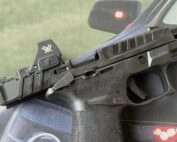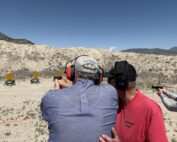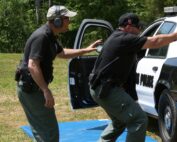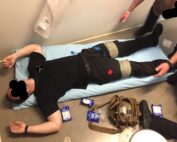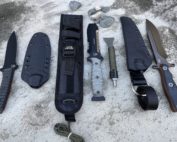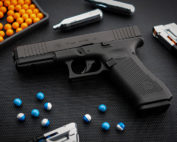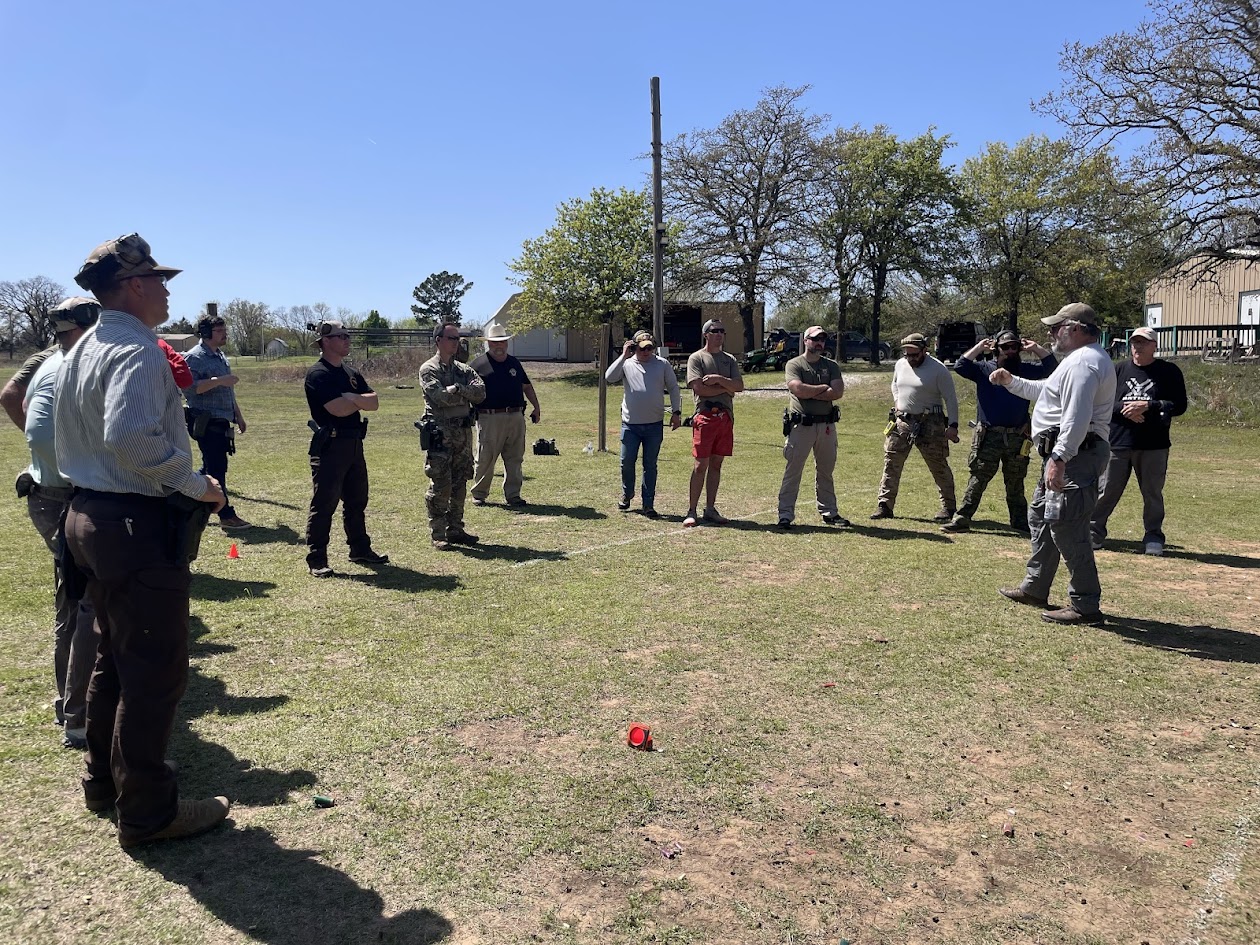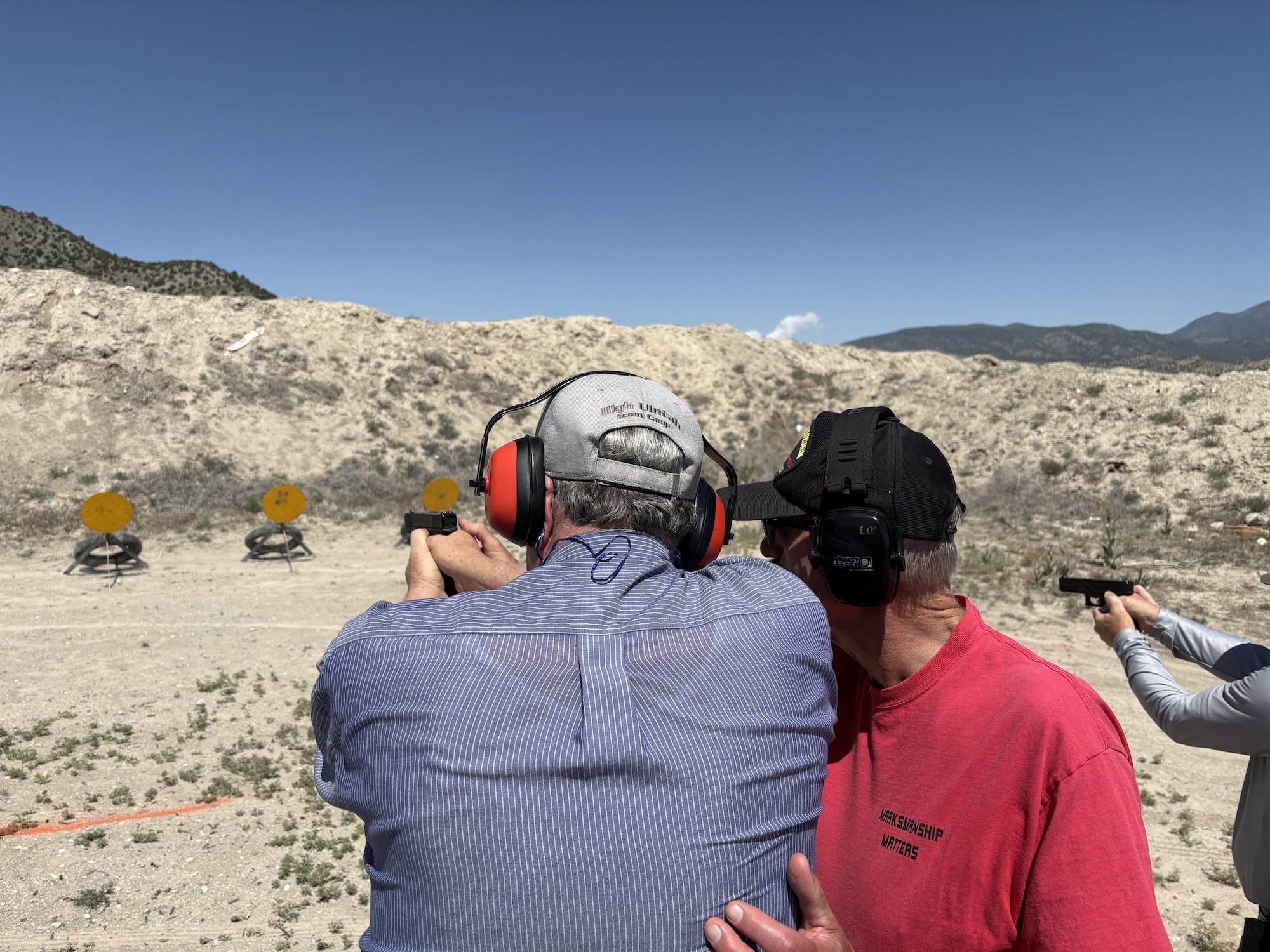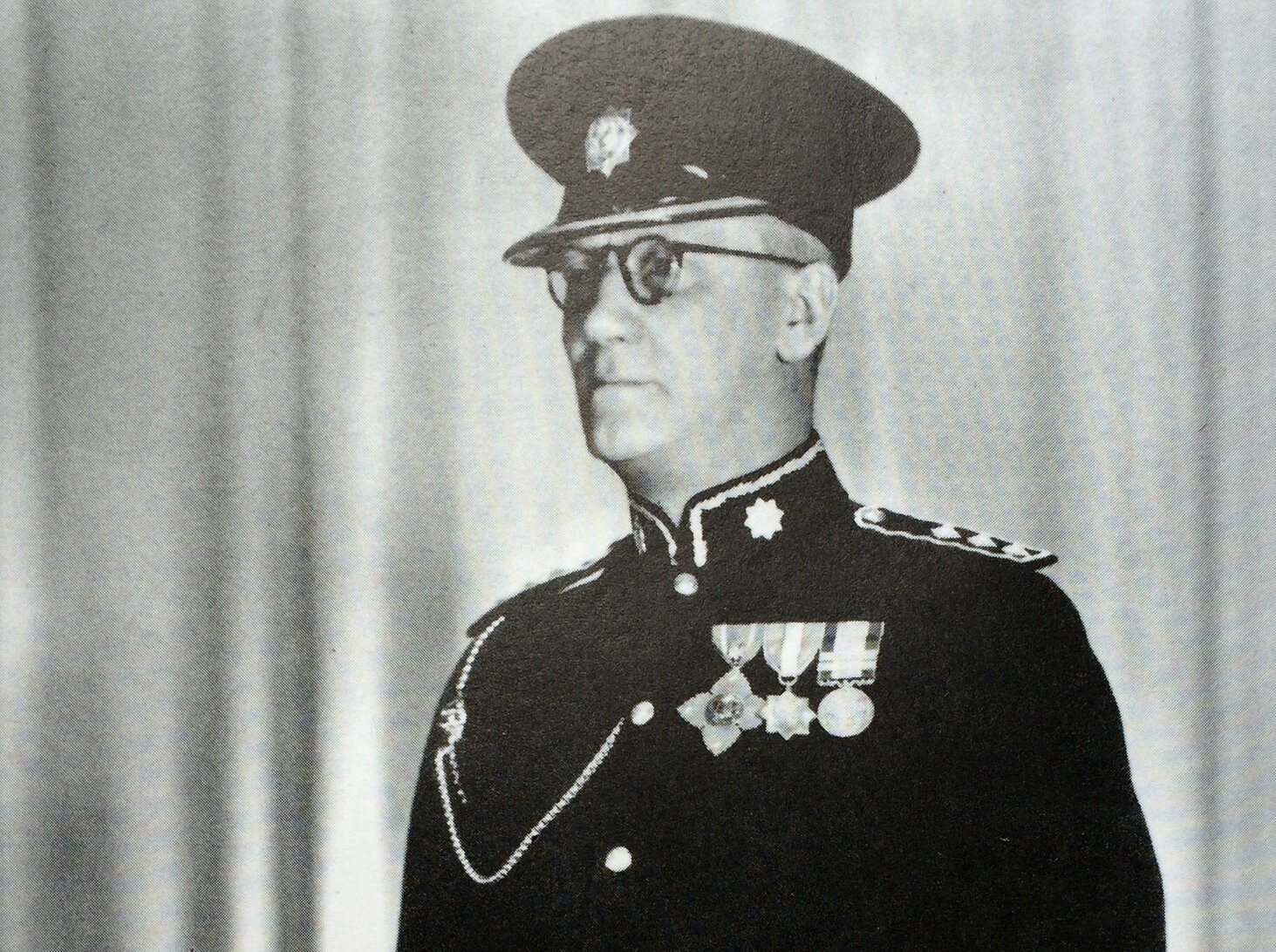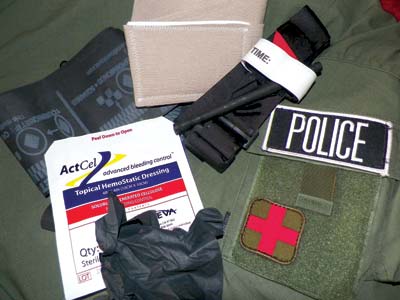
OFFICER-1
By Ben Douglas
Life-Saving Tourniquets.
On August 18, 2012, St. Croix Police Chief, Christopher Howell and his partner, Officer Elsworth Jones, an experienced SWAT officer, were working a recent armed robbery series when they responded to a robbery at a restaurant in a remote area of the island. They were driving toward the scene when they saw a blacked out vehicle racing away and appearing to be out of control in the opposite direction. The chief instinctively sensed this was the vehicle he wanted.
Howell radioed his position and turned his unmarked Tahoe around in an attempt to catch up. As he turned a corner and crested a hill, he saw nothing. What he didn’t know was the suspect’s vehicle had indeed been out of control and crashed in a ravine a few yards beyond the crest. It was dark out and as Howell stopped to scan the area neither he nor Jones saw the suspects laying in wait just a few feet from their vehicle.
A split second later Howell felt what turned out to be a 7.62×39 round rip through his left forearm. The same round struck Jones just below his left eye and exited just below the right. More rounds followed — one tore through Howell’s lower back and another struck the wiring harness in the steering column, disabling the Tahoe.
Life Before Limb
Chief Howell remembered an instructor from a seminar he’d attended 15 years prior saying, “Do something!” He mashed the accelerator, but nothing happened — the motor didn’t respond. He moved the gear selector to neutral and thankfully their vehicle began to coast down the hill. It rolled about 200 yards before coming to a stop at a corner in the road.
Howell had only a moment to assess their situation as they were still receiving fire. He and Jones were bleeding badly and the car radio mic was covered in blood, rendering it useless. Seeing the blood gushing from his left arm Howell knew he could bleed out, but also knew he had a trauma kit with him.
He’d made sure his officers were equipped with them after attending a seminar at the IACP conference just months before. He retrieved the kit, pulled out the tourniquet and thought to himself, “life before limb” and began applying it.
When the blood stopped flowing Howell knew he’d applied the tourniquet correctly. He regained a sense of mission and retrieved a portable radio from his gear bag then radioed for help.
Jones didn’t resign himself to dying that night either. He’d already retrieved his long gun and was firing into the hillside at the gunmen. Howell ordered him to switch to full auto. If the suspects were going to advance on them, they’d meet a wall of lead. Moments later every available officer was on-scene. Howell and Jones were taken to the hospital for the medical care they desperately needed. The three suspects were arrested within a few hours. They’re still awaiting trial.
Return Of The Tourniquet
The limited first aid training I received in the academy cautioned us against using tourniquets on patients with uncontrolled bleeding. We were taught to use direct pressure and monitor the bleeding during transport. This way of thinking has changed over the last decade and thankfully so.
Attitudes about tourniquets began to change in the late 1990’s after the first Iraq invasion. Years later, when IED’s began to take our soldiers’ lives, tourniquets were seen as a viable life-saving option. Trauma caused by IED’s caused significant damage to limbs, but left torsos intact; patients made it to aid stations only to die from blood loss. The military started to use commercial tourniquets designed to decrease side effects commonly associated with such a device. A year later it was widely understood — tourniquets save lives.
Medicine has advanced enough to combat the blood clotting and high acid levels associated with tourniquet use and new tourniquet designs don’t cause the tissue damage of older devices. “Life before limb” doesn’t need to be a consideration any longer. As long as doctors are given information as to when the device was applied, the limb can be saved more often than not. Tourniquets can be applied for up to 6 hours (even up to 48 hours in a few cases) with little to no permanent damage.
Law enforcement around the country is beginning to catch up with best medical practices. My department’s SWAT officers were recently outfitted with trauma kits and within a few months saved two officers’ lives after they’d been shot in ambush situations. Since then the department has pushed to supply more officers with kits and training on their use.
Project Triage
As a result of his experience Chief Howell has started an organization with the mission to supply trauma kits to officers — any department — anywhere. His organization, Project Triage, is working to put businesses and citizens in touch with police departments to provide kits for cops all over the US. Each trauma kit includes a compression bandage, clotting agent and a tourniquet. A serial number and the donor’s name(s) are on the kits. If the kit is used, the officer can access a website and tell the organization the circumstances of its use and word gets back to the donor.
Get the kit and get the training. You could save a life … even your own.
For info: www.projecttriage.org


 (No Ratings Yet)
(No Ratings Yet)
